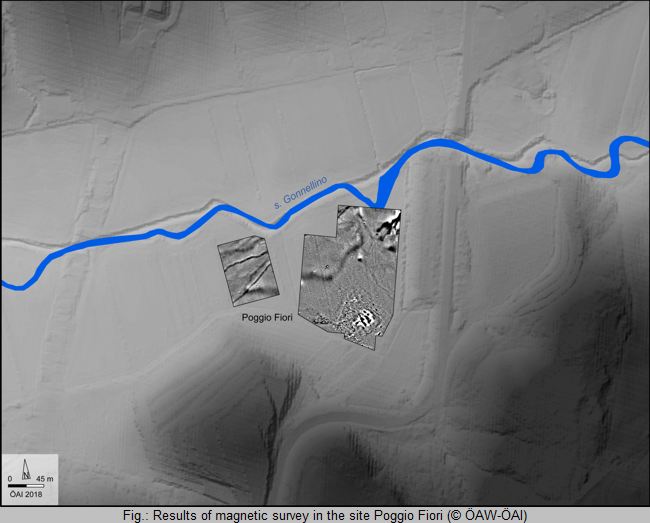In summer 2016, ÖAW-ÖAI, in cooperation with Laboratorio Universitario Volterrano and Soprintendenza Archeologia, Belle Arti e Paesaggio per le Province di Pisa e Livorno, has undertaken a campaign of geophysical prospections in the above area. The sites' selection process was completed in compliance with the results of several field surveys, carried out between 1980 and 2005 by the University of Pisa research team. Within the selected sites two, Capo di Villa and Vallescaia, are located close to the coast, along the supposed path of via Aurelia; whereas the third site, Poggio Fiori, is located in the hinterland, not far from the river Fine and the path of via Aemilia Scauri.

All three investigated sites have given a positive response regarding the presence of human structures, particularly revealing different settlement patterns certainly connected with the transport routes. So far the best prospecting results have been obtained in the site of Poggio Fiori (fig.), where an antique ceramic production center has been detected. The magnetic data collected on that site show the presence of two main rectangular kilns, surrounded by three smaller ones, located within an enclosure where numerous other anomalies are scattered in a radius of 50m.
![]() © Ivan Repetto
© Ivan Repetto
e-mail: ivan.repetto@oeai.at
This article should be cited like this: I. Repetto, Geophysical surveys along the Via Aurelia in northern coastal Etruria. The sites of Capo di Villa, Poggio Fiori and Vallescaia, Forum Archaeologiae 86/III/2018 (http://farch.net).